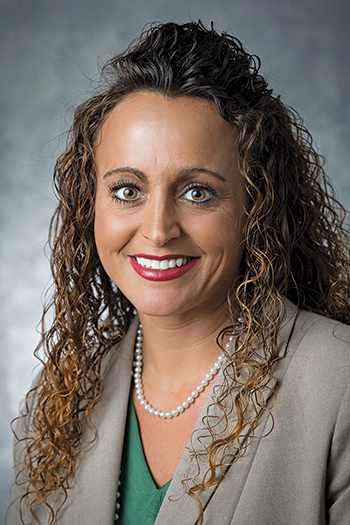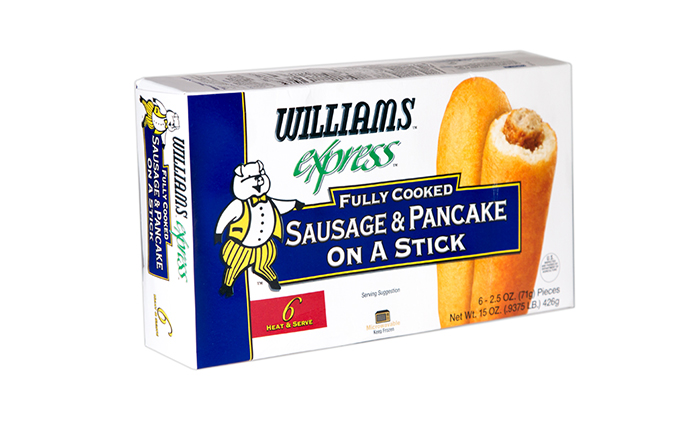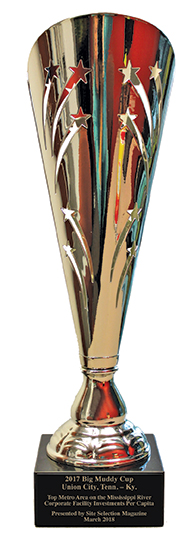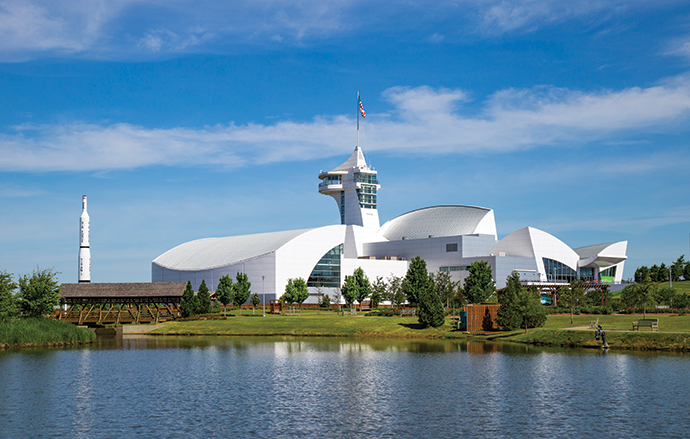Obion County, Tennessee, is the sort of place where chamber news includes a company’s 10-year anniversary, the latest high school football rivalry game and the successful shooting of a 16-point buck.
Seven years ago, that news was dominated by the loss of a major employer, when a Goodyear plant that at its peak employed around 3,000 people shut its doors.
“My Dad was mayor when Goodyear came here in the 1960s,” says Jim Rippy, 79, a lifelong area resident and community leader. “They dominated this whole part of the country.”
The bi-state micropolitan area of Union City, Tennessee-Kentucky, is dominating things this year, as it takes home the Big Muddy Cup, awarded each spring to the metro area along the entire Mississippi River that welcomes the most corporate facility investments per capita over an 18-month period ending with the previous calendar year. Among those successfully making things in the area are a number of LLCs under the umbrella of Titan Tire, which employ between 300 and 400 people at the former Goodyear site making 75 percent of the rubber used by Titan.

Lindsay Frilling, CEO of the Obion County Joint Economic Development Council, took over economic development three months before Goodyear announced it was closing the site, so it was trial by fire. Today she says the area is building on its strengths, which include strong tool-and-die expertise, a Memphis aquifer providing high-quality water to a bevy of food and ag operations, and being in the heart of the heartland — two hours from Memphis and Nashville, and three hours from St. Louis. A penchant for collaboration helps too, whether it involves developing new workforce development and certification programs or business retention.
“I learned quickly my passion was for existing industry,” she says, noting the presence of Kohler, Tyson Foods and Mia Seating. “At the end of the day, if we’re not taking care of the businesses that are here, we don’t need to be in the business of recruitment.”
‘$100 million in a Cornfield’
Jim Rippy today serves as CEO of the multifaceted tourist and educational attraction Discovery Park of America, where after a career in insurance and economic development he came to work alongside his lifelong best friend Robert Kirkland, the late founder of the Kirkland’s gift store chain. “We grew up together,” Rippy says, “played ball together, went to college and roomed together, and moved our families next door to each other.”
Kirkland built the main wholesale distribution operation for Kirkland’s in Union City because it was his hometown. After selling the chain and investing money, he formed a foundation in order to fund the construction of Discovery Park. “His thought was, ‘I want to bring to rural America what you would have to go to New York or Washington or Atlanta to see,” says Rippy. “He asked me if I would help him, and about 10 years ago I started. We ended up spending $100 million in a cornfield in rural America.”
Top Metros by Projects Per Capita
| Metro Area | Projects per Million Inhabitants (project total) | |
| 1. | Union City, Tenn.-Ky. | 107 (4) |
| 2. | Burlington, Iowa-Ill. | 105 (5) |
| 3. | Baton Rouge, La. | 94 (78) |
| 4. | Dubuque, Iowa | 72 (7) |
| 5. | Clinton, Iowa | 62 (3) |
| 6. | Natchez, Miss.-La. | 57 (3) |
| 7. | New Orleans-Metairie, La. | 54 (68) |
| 8. | Dyersburg, Tenn. | 52 (2) |
| T9. | Paducah, Ky.-Ill. St. Cloud, Minn. |
51 (5) (10) |
Top Metros by Total Projects
| 1. St. Louis, Mo.-Ill. | 120 |
| 2. Baton Rouge, La. | 78 |
| 3. Minneapolis-St. Paul-Bloomington, Minn.-Wis. | 72 |
| 4. New Orleans-Metairie, La. | 68 |
| 5. Memphis, Tenn.-Miss.-Ark. | 52 |
| 6. Davenport-Moline-Rock Island, Iowa-Ill. | 16 |
| 7. St. Cloud, Minn. | 10 |
Crucially, that cornfield was bordered on the west by the route for I-69 — the nation’s newest Interstate — and on the east by four-lane Highway 51. “He selected it because of the highways,” Rippy says of the hybrid educational, tourism and entertainment complex, where 400 school groups a year come to lay hands on history. Most come from within a two-hour drive, many from Kentucky, whose state line hovers just five miles away. The official micropolitan area is bi-state, extending into the southwestern tip of Kentucky where Fulton County runs all the way to the river’s edge. Missouri, Arkansas, Mississippi and Illinois aren’t much farther from this unique point of convergence.
“We opened four years ago,” says Rippy, “and we’ve had 1 million people come through, believe it or not, out here in the middle of nowhere.”
Deep Roots
For Discovery Park and many other organizations, nowhere is starting to look a lot like somewhere again. Expansions tracked by Site Selection have come from Colorcoat, Kayser Automotive, Tyson Foods and Williams Sausage — like Kirkland’s, another homegrown company whose products are known far and wide.
“If your fireplace burns real wood logs … If your front porch has a rocking chair … If you drive a truck and listen to Hank,” say the company’s catchy slogans, “you might like Williams Sausage.” The company has produced its “Authentic Country Goodness” since 1958 from its hometown of Union City.
“My family has deep roots here,” says company owner Roger Williams, and the plant just keeps on growing from the original garage in a block building. “We’ve probably added on 20 times,” he says of that location eight miles outside of town. Two years ago it was apparent the team needed more freezer and production space, but adding on yet again was going to disturb product flow. Enter the New Markets Tax Credit (NMTC), which Williams learned about from Frilling’s team at the county (which had helped 9to5 Seating use it successfully) and from subsequent counsel from The HWH Group, a consulting firm. Only certain Census tracts qualify for the tax credit available to areas underserved by traditional sources of capital. Williams’ current site did not qualify, but a site in the 550-acre Northwest Tennessee Regional Industrial Center located on Highway 51 fit the bill perfectly.
The $44-million project, says HWH, involved five Community Development Entities (CDEs), as well as the blending of state and local incentives to provide Williams Sausage with the maximum benefit possible. The advisory firm said the site selection process encompassed a yearlong search that covered 17 states and 160 communities.

Assisted by the TVA economic development team, Williams’ team considered a number of sites in Kentucky and Missouri. “Everybody was very eager, but we felt like we could get as much or more by staying in Obion County, our home,” he says, noting that he finds Tennessee’s tax system more favorable than Kentucky’s. Flexibility in negotiations helped too, as the City of Union City was open to raising effluent limits by about 50 percent from a level established 20 years ago, in order to accommodate the company’s growth. The project was named the Deal of the Year for the 2017 Journal of Tax Credits Industry Award. Now the company is on the way to hiring another 225 people at the new complex, which will feature a corporate office as well as production lines for the company’s breakfast sandwiches.
Williams says the whole hog sausage his company makes comes from a pretty limited supply of top-quality sows, some of which come from as far away as Iowa and Canada. Williams’ biggest competitor for the animals? A Jimmy Dean plant about 30 miles away.
As for outbound product, he says, “We’re centrally located to such a big part of the US population. For distribution, this is a great place to be.”
At the Junction
Frilling points out how the bi-state region benefits from families of higher education institutions in the vicinity as well as transportation assets, including the Port of Cates Landing on the Mississippi River. Both arenas offer showcases for regional collaboration, whether it’s new workforce certification coordination or sharing port funding. The port is 50-percent funded by Lake County, with 25 percent each from Dyer and Obion counties. The airport is in Obion, but jointly operated by Obion and Weakley counties.
Though Class I rail with CN is available in Obion, “we’ve been in discussion recently with Ketnucky officials because we really need rail at the Port of Cates Landing,” she says. “We have talked about putting together an infrastructure grant, and running a line up to the Hickman port and back down to Union City. It would help the Port of Hickman in the process.
In Fulton — the town on the Kentucky side where longtime Fulton native, businessman and philanthropist Jeff Campbell helped lead the “Paint the Town” initiative to refresh downtown a few years ago — Colorcoat is painting windows made by Pella not far away in Murray, Kentucky, and will hire up to 80 people eventually.

The same Jeff Campbell has reopened the historic Meadows Hotel, first opened in 1900 but gutted by fire twice. He was also the benefactor who provided matching funds to create a new city park in South Fulton, on the Tennessee side. "Our hotel is on State Line Road," he says. "You could throw a rock out of the hotel and hit Tennessee."
Not that anyone’s ever done that from one of the 14 unique rooms in the new boutique hotel, just opened in November. Campbell sees his hotel and restaurant and other downtown investments as an ideal companion to commercial development just up the road.
“Union City is probably 20 years ahead of us in retail development, Martin is a college town about 10 years ahead,” says the sixth-generation Fultonite, who moved back home and built his dream house in 2008. “We’re 10 miles from Union City, which is 10 from Martin — I call it the Golden Triangle. I’d like to see Italian, seafood and Mexican restaurants on my block, shops open up, and live music, and let Fulton become the entertainment destination in the area.”
The next piece of the puzzle is, finally, completion of the I-69 segment from Kentucky down past Union City. “Then you can easily connect to I-155 that connects to I-55” running north-south to Memphis and St. Louis, Williams says. “That’s a big plus for our area.
Jim Rippy has been championing the I-69 project since early days. Kentucky is well on the way to reaching the state line by 2020 with its portion. Now, says Rippy, Tennessee’s portion has made a short list of seven projects sent to U.S. Transportation Secretary Elaine Chao by Tennessee Governor Bill Haslam as priority road projects for federal infrastructure funding.
“I’m hopeful they’ll get it done by 2020,” Rippy says. If they do, the two states’ economies will meet at the state line yet again.
“I-69 is a game changer not only for Discovery Park,” he says, “but this whole part of the country.”

